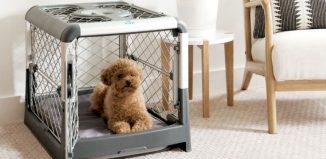Nuisance barkers are dogs that constantly bark, either because they are territorial or because it is a learned attention-seeking behaviour. If you’ve ever been around such dogs, then you know that it may be one of the most draining experiences.
Behaviour modification can help control nuisance barking, but owners who are not there when the barking happens are unable to discipline the dog. That’s when the bark control collar steps in. It is a specifically designed training collar to make the dog avoid barking over time by providing negative reinforcement for that activity.
How to Choose the Right Anti-Bark Collar for Your Furry Friend?

With that being said, a quality and reliable anti-bark collar for dogs will control your pooch’s woofing with ease and ultimate safety. However, choosing the right type isn’t always a straightforward decision. Therefore, the following step-by-step guide might give you a hand.
Learn the Difference between Bark and Training Collars
Generally speaking, bark collars are training collars. Both train the dog to stop barking when you’re not around. However, you need to know that unlike barking collars which can auto-detect your canine’s barking and help him correct that behaviour, training alternatives cannot auto-detect it.
Furthermore, a training collar is an apparatus that corrects a dog’s specific behaviour, like leaping up on humans, scaling furniture, or recalling. You can determine when to correct your dog by using the remote that is included with these collars. Eventually, your dog will stop exhibiting the exact behaviour that irritates you. Some can also be used in a combination with an invisible fence.
Identify the Right Type

The best way to identify the type of anti-bark collar for dogs you will need is to think about the type of behaviour you want your dog to correct. An electronic barking collar, for example, detects vibrations in the voice cords. As soon as it detects these vibrations, the dog’s neck is given a little shock. Some online pet retailers claim that these vibrations are similar to the shock that people experience or give when they shuffle walk on a carpet and then touch a doorknob or someone else.
Nevertheless, organisations dedicated to the prevention of cruelty to animals have strongly denounced these types of collars as cruel, and in Australia, the use of electronic bark collars is even forbidden. Experts in veterinary medicine also doubt the efficacy of electronic bark collars. In contrast, citronella collars are equipped with a tiny microphone that allows your dog to bark when it detects it.
It will release a plant-based citronella scent when such behaviour occurs. Many dog owners preferred citronella collars over electric shock ones because they effectively reduced or stopped irritating barking. Many stray and cat adoption groups also use citronella bark options to curtail excessive barking. However, the only drawback of citronella models is their problematic design.
Ultrasonic collars for barking also come with a microphone and emit a high-pitched sound that dogs find annoying. Most systems only use one tone, but some employ two—one to indicate bad behaviour and one to reward good behaviour. Ultrasonic designs are often combined with electronic shocks to produce a first sound and, if the behaviour continues, a jolt. Nevertheless, the ultrasonic option is the one with the least amount of supporting studies among the three types mentioned.
Consider Your Pooch’s Size and Personality
When on the hunt for the design that will best suit your canine, consider his size. Both bark and training collar makers include a size and weight guide so you may be confident the collar will fit your puppy’s neck. If the collar for barking you choose fits your dog’s weight range, there’s a good chance it will fit and feel comfortable on them.
When making a purchase, personality should also be taken into account. You want your puppy to learn from corrections without having their behaviour overcorrected. For this reason, a citronella collar is a perfect match for a dog that is nervous, sensitive, or that you think might not react well to a static shock. It lessens their anxiety and provides them with just enough of a distraction to make them stop barking excessively.
In most cases, a static shock collar is a preferable option if you have a stubborn or headstrong dog, or if your dog is a rescue from an abusive home. This is a quick and easy way to train your furry friend and deal with misbehaviour without placing yourself in awkward situations. Most breeds learn how to use static shock collars quite fast.
Bear the Intensity Level in Mind

You should also take into account the intensity level of the bark collar you’re about to get. In this regard, most static shock designs have multiple intensity level settings. Some have a range of 1 to 10, and some have a maximum of 127. This allows you to control the intensity of the static shock and ensure that your pooch is never hurt. Again, we advise testing the collar in your hand’s palm to make sure the level of intensity is suitable for your dog.












